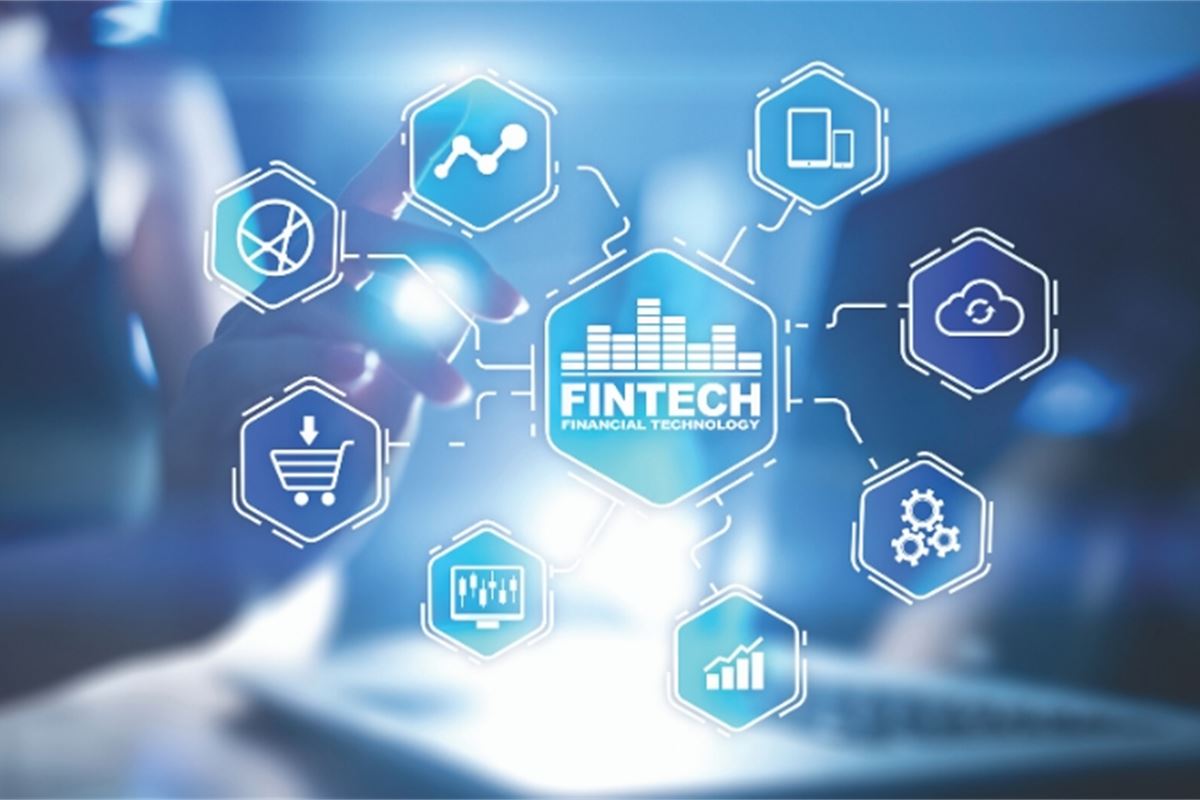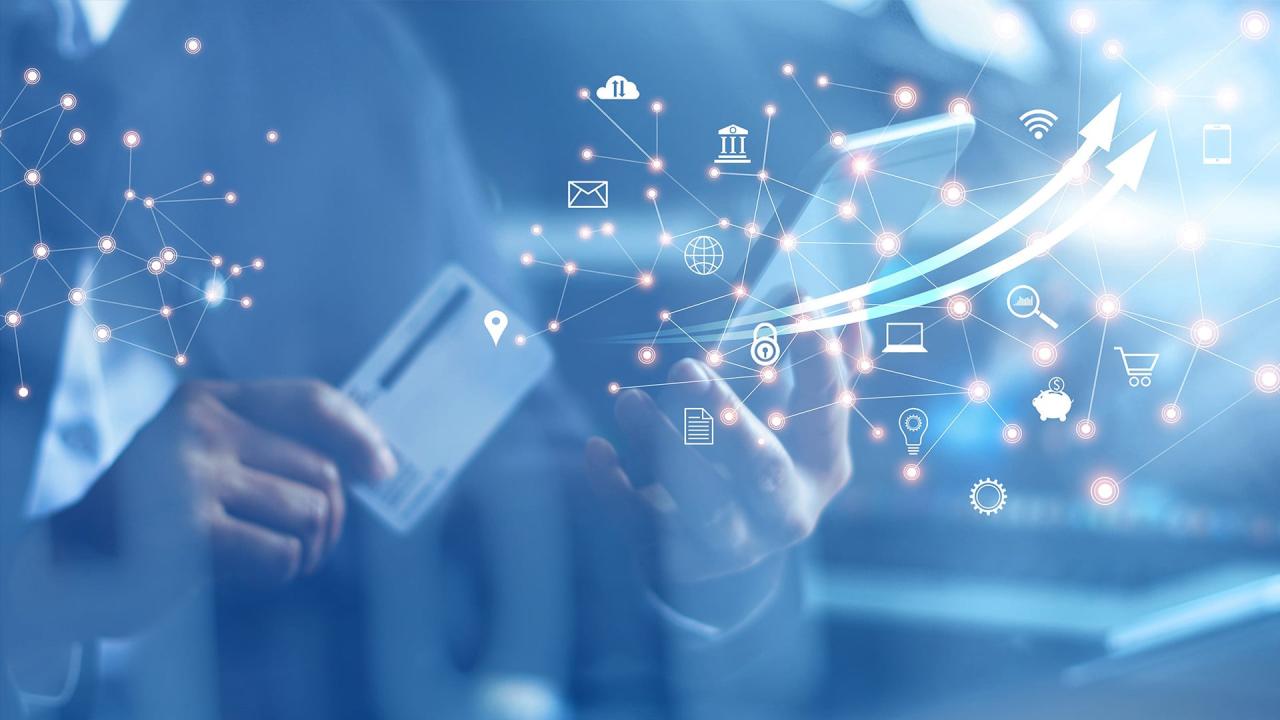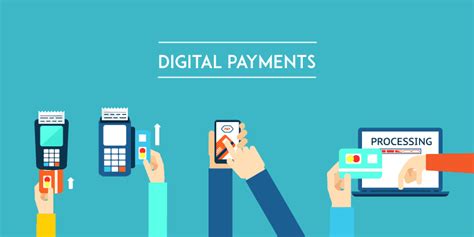The landscape of global commerce is undeniably being reshaped by the relentless evolution of digital payments. What began as a mere convenience has blossomed into a foundational pillar of modern economies, revolutionizing how we buy, sell, and interact with money. From contactless transactions in bustling city centers to cross-border remittances executed with a tap, digital payments are dismantling geographical barriers and accelerating financial inclusion.
For businesses, consumers, and content creators alike, grasping the trajectory of these innovations is paramount. Understanding the future of digital payments isn’t just about predicting trends; it’s about anticipating the very structure of tomorrow’s financial interactions, a topic of immense interest that drives high search engine optimization (SEO) value and, consequently, robust Google AdSense revenue. This comprehensive article will delve into the transformative forces propelling digital payment evolution, dissecting key technological advancements, exploring their societal impacts, and peering into the horizon of what promises to be an increasingly seamless and interconnected financial world.
The Digital Payment Revolution: A Paradigm Shift
The journey from bartering to banknotes, and now to bits and bytes, represents humanity’s continuous quest for more efficient and secure ways to exchange value. Digital payments, at their core, involve the transfer of funds electronically, eliminating the need for physical cash or traditional paper checks. This fundamental shift has been driven by several convergent factors: the ubiquity of internet access, the proliferation of mobile devices, rising consumer demand for convenience, and technological breakthroughs that enhance security and speed.
The impact of this revolution is multifaceted:
- Enhanced Convenience: Transactions can occur anytime, anywhere, with just a few clicks or a tap.
- Increased Efficiency: Reduced processing times, automated reconciliation, and streamlined operations for businesses.
- Improved Security: Advanced encryption, tokenization, and fraud detection technologies often make digital transactions safer than handling cash.
- Greater Financial Inclusion: Digital platforms provide access to financial services for unbanked and underbanked populations, particularly in developing economies.
- Reduced Operational Costs: Less cash handling, fewer trips to the bank, and automated record-keeping lower overheads for businesses.
- Rich Data Analytics: Digital transactions generate valuable data, offering insights into consumer behavior and market trends.
- Environmental Benefits: Less reliance on physical currency reduces paper production and transportation-related carbon footprints.
This transformative shift is not merely about alternative payment methods; it’s about fundamentally redesigning the plumbing of global finance, making it faster, smarter, and more accessible.
Core Technologies Fueling Digital Payment Evolution
The rapid advancement of digital payments is intrinsically linked to groundbreaking technological innovations. These technologies act as the bedrock upon which the financial future is being built.
A. Mobile Wallets and NFC Technology
Mobile wallets, such as Apple Pay, Google Pay, and Samsung Pay, have transformed the in-store payment experience. They leverage Near Field Communication (NFC) technology, allowing users to make payments by simply tapping their smartphone or smartwatch on a compatible point-of-sale (POS) terminal.
- Seamless Convenience: Eliminates the need for physical cards or cash, streamlining checkout.
- Enhanced Security: Employs tokenization, where actual card numbers are replaced with unique, encrypted “tokens” for each transaction, significantly reducing fraud risk.
- Loyalty Program Integration: Many mobile wallets integrate loyalty cards and rewards programs, providing personalized offers and simplifying redemption.
- Growing Acceptance: As NFC-enabled POS terminals become standard, mobile wallet acceptance continues to expand globally.
The simplicity and security offered by mobile wallets make them a cornerstone of the modern digital payment landscape.
B. Artificial Intelligence (AI) and Machine Learning (ML)
AI and ML are not merely augmenting digital payment systems; they are fundamentally reshaping them, particularly in areas of security, personalization, and efficiency.
- Fraud Detection and Prevention: AI algorithms can analyze vast datasets of transaction patterns in real-time, identifying anomalies and flagging suspicious activities with unparalleled accuracy, significantly reducing financial crime. This moves beyond rule-based systems to predictive analytics.
- Personalized Financial Services: ML models can analyze consumer spending habits to offer tailored financial advice, personalized credit options, or customized loyalty rewards.
- Automated Customer Support: AI-powered chatbots and virtual assistants handle customer queries, resolve disputes, and guide users through payment processes, enhancing the user experience and reducing operational costs.
- Credit Scoring: ML algorithms are developing more nuanced and inclusive credit scoring models, potentially extending financial services to individuals with limited traditional credit histories.
- Risk Management: AI assists financial institutions in assessing and managing various risks associated with digital transactions, from credit risk to market volatility.
AI and ML are transforming digital payments into intelligent, self-optimizing systems.
C. Blockchain Technology and Cryptocurrencies
While still evolving, blockchain technology and cryptocurrencies present a disruptive force, offering decentralized, transparent, and immutable transaction possibilities.
- Decentralization: Transactions are verified by a network of computers rather than a central authority (like a bank), potentially reducing transaction fees and processing times.
- Security and Immutability: Once recorded on the blockchain, transactions are virtually impossible to alter, offering a high degree of security and transparency.
- Smart Contracts: Self-executing contracts stored on the blockchain, automatically fulfilling terms when conditions are met, reducing the need for intermediaries in complex transactions.
- Cross-Border Payments: Cryptocurrencies like Bitcoin or stablecoins can facilitate faster and cheaper international transfers compared to traditional banking systems, bypassing costly intermediary banks.
- Digital Assets and NFTs: Blockchain enables the secure transfer of unique digital assets (Non-Fungible Tokens or NFTs), opening new avenues for commerce in virtual worlds and digital art.
Though facing regulatory and scalability challenges, blockchain’s potential to redefine trust and value exchange in payments is immense.
D. Biometric Authentication
Biometric technology enhances payment security and user convenience by utilizing unique biological characteristics for verification.
- Fingerprint Scanners: Widely adopted in smartphones, offering quick and secure authentication for mobile payments and app access.
- Facial Recognition: Used for unlocking devices and authorizing transactions, providing a hands-free security layer.
- Iris and Voice Recognition: Emerging as secure alternatives, particularly in high-security transactions or for accessibility purposes.
- Reduced Fraud: Biometrics are significantly harder to fake or steal than passwords or PINs, offering a superior level of security.
The integration of biometrics is making digital payments not only more secure but also more frictionless.
E. Internet of Things (IoT) Payments
The proliferation of IoT devices is extending payment capabilities beyond traditional smartphones and computers, embedding commerce directly into our everyday objects.
- Wearable Payments: Smartwatches, fitness trackers, and even smart rings can be used to make payments with a simple gesture.
- Connected Car Payments: In-car systems allow drivers to pay for fuel, tolls, or parking directly from their vehicle’s dashboard.
- Smart Home Payments: Refrigerators can order groceries, and smart speakers can facilitate voice-activated purchases.
- Frictionless Transactions: IoT payments aim to make transactions so seamless they become almost invisible, integrating financial exchange into daily routines.
As more devices become interconnected, the potential for embedded, invisible payments will continue to grow exponentially.
F. Real-time Payment Systems
The shift from batch processing to instant payment settlement is a major development in domestic and international transactions. Examples include India’s UPI, Europe’s SEPA Instant Credit Transfer, and the U.S.’s FedNow Service.
- Instant Settlement: Funds are transferred and made available in the recipient’s account within seconds, 24/7, 365 days a year.
- Improved Cash Flow: Businesses benefit from immediate access to funds, enhancing liquidity and operational efficiency.
- Enhanced Transparency: Real-time tracking of payments provides immediate confirmation of successful transactions.
- New Business Models: Enables innovative services that rely on instant payments, such as on-demand worker payments or instant loan disbursements.
Real-time payments are transforming liquidity management and enabling new forms of economic activity.
Major Trends Shaping Tomorrow’s Digital Payments

Beyond core technologies, several overarching trends are dictating the direction and adoption of digital payment solutions.
A. The Rise of Super Apps
Particularly prevalent in Asia (e.g., WeChat Pay, Alipay), super apps integrate a vast array of services—messaging, social media, e-commerce, food delivery, and most importantly, payments—into a single platform.
- Customer Stickiness: Users spend more time within the app, fostering loyalty and increasing engagement.
- Unified Experience: Eliminates the need to switch between multiple apps for different services, offering ultimate convenience.
- Data Synergy: A comprehensive view of user behavior enables highly personalized services and targeted marketing.
- Ecosystem Lock-in: Creates a strong network effect, making it difficult for users to leave the platform.
The super app model represents a powerful strategy for consolidating digital life, with payments at its core.
B. Embedded Finance and Invisible Payments
Embedded finance integrates financial services directly into non-financial platforms, making payments an almost seamless, invisible part of the user experience.
- Contextual Payments: Payments occur naturally within the context of an activity, such as booking a ride, ordering food, or streaming content.
- Reduced Friction: Users complete transactions without consciously thinking about the payment process, leading to higher conversion rates.
- New Revenue Streams: Non-financial companies can offer financial services, creating additional income and deeper customer relationships.
- Subscription Economy: Facilitates recurring payments for services, which is central to the growing subscription-based economy.
Invisible payments aim to remove the payment step as a separate decision, making it an integral part of the service consumption.
C. Cross-Border Payments Reinvention
Traditional international payments are often slow, expensive, and opaque. Digital innovations are addressing these inefficiencies.
- Blockchain-based Solutions: Cryptocurrencies and stablecoins offer potential for near-instant, lower-cost international transfers by bypassing traditional correspondent banking networks.
- Fintech Remittance Services: Companies like Wise (formerly TransferWise) offer competitive exchange rates and lower fees by using local bank accounts to facilitate transfers, bypassing SWIFT.
- Central Bank Digital Currencies (CBDCs): Governments exploring digital versions of their national currencies could streamline cross-border transactions and enhance financial control.
- API-driven Interoperability: Enabling different payment systems and financial institutions to communicate seamlessly, facilitating faster and more transparent international transfers.
The future of cross-border payments promises greater speed, affordability, and transparency.
D. Buy Now, Pay Later (BNPL) Solutions
BNPL services allow consumers to split purchases into interest-free installments, gaining immense popularity, especially among younger demographics.
- Increased Affordability: Makes higher-value purchases more accessible by breaking down costs.
- Flexibility for Consumers: Offers an alternative to traditional credit cards, often with simpler approval processes.
- Boosts Merchant Sales: Retailers see increased conversion rates and average order values.
- Risk Management: BNPL providers use sophisticated algorithms to assess creditworthiness and manage default risk.
BNPL represents a significant shift in consumer credit and payment deferral options.
E. Regulatory Evolution and Digital Identity
As digital payments proliferate, regulatory frameworks are evolving to ensure consumer protection, financial stability, and combat illicit activities. Digital identity solutions are key to this.
- Know Your Customer (KYC) and Anti-Money Laundering (AML): Stricter regulations require robust digital identity verification to prevent fraud and financial crime.
- Open Banking Initiatives: Encouraging data sharing (with user consent) between banks and third-party providers to foster innovation and competition.
- Data Privacy Regulations: Laws like GDPR and CCPA influence how payment data is collected, stored, and used, emphasizing user consent.
- Digital ID Systems: Governments and private entities are developing secure digital identity platforms that can streamline onboarding for financial services and authenticate transactions.
Regulation and digital identity are crucial for building trust and scaling digital payment ecosystems securely.
F. Sustainability in Payments
As global awareness of environmental and social impact grows, the payment industry is also responding with sustainable practices.
- Reduced Carbon Footprint: Electronic transactions inherently reduce the need for paper currency, plastic cards, and physical infrastructure.
- Green Payment Options: Some payment providers are offering carbon offsetting programs for transactions or investing in renewable energy.
- Transparency and Ethical Sourcing: Consumers increasingly demand transparency in supply chains, which payments can support by tracking origins.
- Circular Economy Integration: Payment systems can facilitate rental, subscription, and repair models, supporting a more circular economy.
Sustainability is becoming a differentiator and a core value proposition for modern payment solutions.
Challenges and Opportunities in the Digital Payment Future

Despite the incredible progress, the path to a fully digital payment future is not without its hurdles. However, each challenge often presents a corresponding opportunity for innovation.
A. Cybersecurity Threats and Fraud
The increasing value and volume of digital transactions make them prime targets for cybercriminals. Phishing, malware, data breaches, and identity theft remain persistent threats.
- Opportunity: Continued investment in AI-driven fraud detection, multi-factor authentication, biometric security, and robust encryption. Collaboration between industry players and law enforcement is crucial.
- Opportunity: Education of consumers and businesses about best security practices, fostering a more vigilant user base.
B. Interoperability and Fragmentation
The proliferation of various payment methods, platforms, and national real-time systems can lead to a fragmented landscape, hindering seamless cross-border or even domestic transactions between different providers.
- Opportunity: Development of universal standards, open APIs, and collaborative frameworks between payment networks to ensure seamless interoperability. Central bank initiatives for CBDCs could also address this.
- Opportunity: Aggregator platforms and payment orchestration layers that simplify payment acceptance for merchants and provide a unified experience for consumers.
C. Regulatory Complexity and Compliance
The rapid pace of innovation often outstrips regulatory development. Navigating diverse and evolving regulations across different jurisdictions (e.g., data privacy, anti-money laundering, consumer protection) is a significant challenge for global payment providers.
- Opportunity: Regulators working closely with fintech innovators to create agile, forward-looking frameworks that encourage innovation while safeguarding consumers and financial stability. Regulatory sandboxes and clear guidelines are key.
- Opportunity: RegTech (Regulatory Technology) solutions leveraging AI and automation to help businesses manage compliance burdens more efficiently.
D. Digital Divide and Financial Inclusion
While digital payments offer immense potential for financial inclusion, a significant portion of the global population remains unbanked or underbanked, often lacking access to smartphones, internet connectivity, or digital literacy.
- Opportunity: Development of low-cost, accessible digital payment solutions that do not require smartphones (e.g., USSD-based mobile money), coupled with financial literacy programs.
- Opportunity: Government and private sector partnerships to expand digital infrastructure and provide affordable access to technology in underserved areas.
E. Consumer Trust and Adoption
Despite the benefits, some consumers remain hesitant to adopt digital payments due to concerns about security, privacy, or a simple preference for traditional methods.
- Opportunity: Building robust security features, transparent data handling practices, and clear communication about these measures to foster trust.
- Opportunity: Designing intuitive, user-friendly interfaces and offering compelling incentives (e.g., rewards, discounts) to encourage wider adoption.
Conclusion
The future of digital payments is not merely an evolution; it’s a revolution that promises to fundamentally transform how value is exchanged across the globe. Driven by relentless technological innovation in AI, blockchain, biometrics, and IoT, coupled with the strategic shifts towards super apps and embedded finance, we are hurtling towards an era of highly convenient, incredibly secure, and increasingly invisible financial transactions. While challenges in cybersecurity, interoperability, and regulatory complexity persist, they also represent fertile ground for ingenuity and collaboration.
The ongoing push for financial inclusion and sustainability will ensure that this digital transformation is not only efficient but also equitable and environmentally conscious. For businesses, embracing these changes means unlocking new revenue streams, optimizing operations, and deepening customer relationships. For consumers, it promises unparalleled convenience and security in their daily transactions. The journey towards a truly connected, largely cashless global economy is well underway, making expertise in this domain invaluable for any entity seeking to thrive in the digital age. This dynamic progression ensures that “digital payments” remains a highly searched and monetizable topic, underpinning a significant portion of the digital economy’s growth and, by extension, providing a stable source for AdSense revenue for those who master its narrative.







